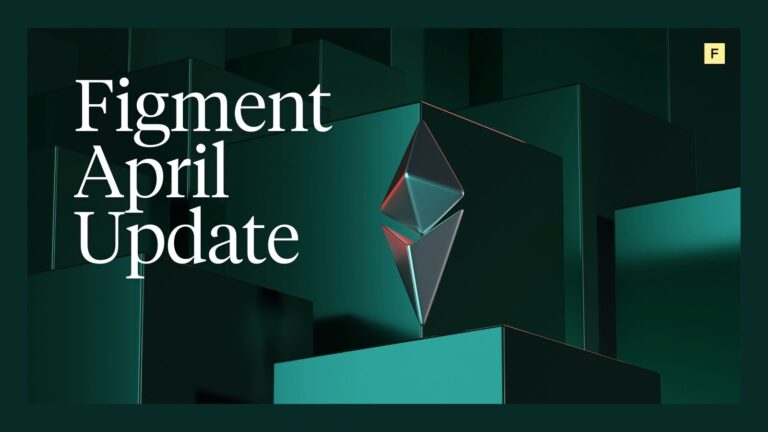While many different projects lay the groundwork for Web 3, the number of blockchains continues to grow every day. The quantity of individual blockchains causes potential roadblocks for compatibility and information transfer.
Polkadot aims to unify the Web 3 ecosystem by bridging tokens and information from one blockchain to another. The blockchain interoperability that Polkadot aims to provide is crucial for a fully functional, decentralized, and user-friendly web, connecting blockchains like Ethereum, Cosmos, and more.
Polkadot is unique compared to other blockchains. Polkadot is built using a couple of components, but what makes Polkadot unique are its “parachains” – a type of decentralized and dynamic blockchain that enables customizable and independent chains.
Polkadot Overview
What is Polkadot?
In 2017, Polkadot was announced as an open-source project in collaboration with the Web 3 foundation to return control of the Internet to individuals. Polkadot is looking to complement projects like Ethereum and Cardano through its focus on interoperability for all blockchains. Polkadot is sometimes called the “blockchain of blockchains” due to its structure allowing individuals to create their own blockchain and monitor data from existing blockchains.
How does Polkadot work?
Polkadot is built using different components called the relay chain, parachains, parathreads, and bridges.
- Relay Chain:
- The relay chain is the central core of Polkadot, and is responsible for the network’s consensus, cross-chain interoperability, security, and staking. The relay chain supports other network components such as parachains, parahtreads, and bridges.
- Parachains:
- Parachains are independent blockchains that run on dedicated slots of the relay chain. Parachains benefit from the shared security of running on top of the relay chain. Their name comes from the concept of chains that run parallel to the relay chain, hence, parachain.
- Parachains are enabled through a governance proposal or a parachain slot auction. Each parachain is fully independent and can be customizable to serve a specific purpose to facilitate various use cases. Assuming a group of parachains are successfully deployed to Kusama (Polkadot’s cousin network), parachains will be coming to Polkadot sometime later in 2021.
- Parathreads:
- The functionality of parathreads are very similar to parachains, the key difference being that parachains have a dedicated slot on the relay chain, and parathreads share slots. Currently, the Polkadot team is focused on launching parachains, and parathreads are coming in a future upgrade.
- Instead of winning a slot auction to launch a parachain, parathreads have a set fee for registrations allowing developers a pay-as-you-go model. Parathreads allow developers added flexibility when launching projects or building on Polkadot, while still benefiting from the shared security of the relay chain.
- Bridges:
- Bridges enable interoperability between external blockchains such as Bitcoin, Ethereum, or Cosmos. Bridges allow for the transfer of tokens and data between Polkadot and other blockchains without requiring a centralized authority.
The Polkadot Ecosystem
There are a wide variety of projects supporting, and building on Polkadot in many different ways.
Kusama
Kusama is often referred to as Polkadot’s cousin due to it being technically similar to Polkadot. Kusama is a network designed for testing, risk-taking, and building for developers who want to push updates to see what is possible quickly. Using nearly the same codebase as Polkadot, Kusama gives developers the flexibility to innovate and test new code on the network before bringing it over to Polkadot.
While Kusama helps developers prepare for deployment on Polkadot, Kusama is also four times faster than Polkadot, allowing quick transaction speeds, low economic barriers, open governance, and an engaged community.
Parachains are coming to Kusama. Currently, there are five parachain auctions scheduled to take place on Kusama between mid-June and mid-July. If all goes smoothly with parachains on Kusama, we can expect to see parachains coming to Polkadot soon, hopefully late 2021.
Acala
The Acala Network, powered by the ACA token, and dubbed the “DeFi hub of Polkadot”, aims to be an all-in-one DeFi platform to help you stake, swap, borrow, lend, earn, and more. Acala has Ethereum compatibility offering developers a wide range of tools to build on the network.
The platform also includes a trustless staking derivative (liquid DOT), and a multi-collateralized stablecoin backed by cross-chain assets (aUSD). Users can stake DOT trustlessly via the Homa protocol staking pool and will receive Liquid DOT (L-DOT) accounting for both the DOT amount and on-going staking reward earned. Users can then use L-DOTs for payment, DeFi activities, trades, and more.
A key feature of Acala, the Honzon Protocol, aims to be a set of mechanisms that manages aUSD loans with multiple collaterals. Honzon will also monitor and adjust stability of aUSD based on various risk parameters such as collateral ratio, interest rates, debt level etc.
All of the services on Acala can be paid with micro gas fees using any token. Both the ACA and aUSD tokens provide the technical infrastructure for Acala’s DeFi ecosystem.
Moonbeam
Moonbeam is a bridging platform focused on interoperability between Ethereum and Polkadot. Moonbeam aims to provide developers a lower barrier to entry for developing Ethereum compatible decentralized applications on a more cost-effective platform like Polkadot. The Moonbeam utility token “Glimmer” (GLMR) is used for fees on the network.
Moonbeam’s blockchain compatibility allows developers an easy way to port over their existing Ethereum DApps to Polkadot, enabling cross-chain liquidity between the two. Moonbeam will be one of the first parachains on Polkadot to offer full Ethereum interoperability.
Moonbeam makes it easier to build applications on Polkadot compared to implementing a full parachain. As a future Polkadot Parachain candidate, Moonbeam will enable a direct connection to Polkadot’s relay chain allowing for smooth upgrades when necessary.
Centrifuge
Centrifuge is a “gateway for real-world assets into DeFi” bringing assets like invoices, real estate, and royalties to DeFi, allowing users to take out loans using real-world assets as collateral without banks or other intermediaries.
The Centrifuge blockchain is powered by the Radial token (RAD) and is used for fees and voting on governance proposals. Centrifuge’s Tinlake app, an open marketplace of asset pools, gives anyone the ability to launch an on-chain credit fund creating collateral-backed pools of loans. Tinlake is currently built on Ethereum, however, it will soon be fully migrated to the Centrifuge Chain.
Plasm
Plasm is a layer two, Ethereum compatible, open source smart contract platform designed to become a Polkadot Parachain. As a parachain candidate for Polkadot, Plasm is a DApp hub that supports multi-virtual machines and layer 2 scaling solutions. PLM is the utility token for Plasm that powers staking, transactions, and governance on the network.
Earlier this year, Plasm became the first Polkadot testnet parachain. Along with this, Plasm completed the first-ever cross-chain message transaction on the Polkadot testnet with Acala’s testnet parachain. Plasm aims to be a multi-chain smart contract platform that will support multiple blockchains and virtual machines.
Kilt Protocol
KILT is a blockchain protocol for issuing self-sovereign, anonymous, verifiable, and decentralized credentials. KILT aims to be a parachain in the Polkadot ecosystem, providing a “source of truth” for other projects that build on the protocol.
Users often store their login credentials in an insecure fashion, by utilizing the same passwords and storing their details in one place. KILT is looking to be an alternative to handling user data, by pioneering a new way of issuing credentials on the internet.
KILT became an early participant in the parachain testnet for Polkadot, and aims to be in one of the early Kusama parachain auctions.
Why Polkadot?
Polkadot is a unique blockchain that can efficiently scale, specialize, self-govern, and upgrade easily. Polkadot can process numerous transactions on multiple chains in parallel, cutting out bottlenecks that can occur on other blockchains.
Each blockchain on Polkadot can be designed for a specific use case or application to aid with specialization and allows developers to work together through network interoperability and transparent self-governance models. Through this unique blockchain architecture, Polkadot unifies multiple specialized blockchains into one network.
What’s next for Polkadot?
Currently, Polkadot is in its “Parachain Rollout” phase and is monitoring the parachain activity on Kusama. Once the parachain code on Kusama has been fully audited, tested, and benchmarked, Polkadot governance can enable parachains and parachain slot auctions will begin.
When enabled on Polkadot, parachain auctions will be auctioned off one by one, with each auction lasting around two weeks. Parachain auctions will be “candle auctions” and after each auction, the winning parachain will be deployed to the network at the beginning of its lease period. Polkadot upgrades to come after parachains are parathreads, which are currently under development.
Polkadot will provide unification to the Web 3 ecosystem by bridging tokens and information for a fully interoperable and decentralized web.



